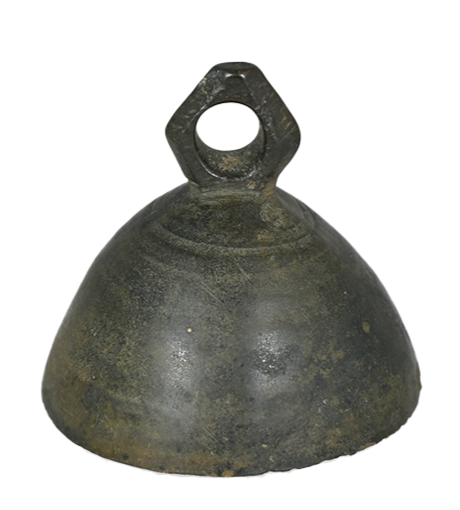BELL
The chime of a bell is often used to signal the arrival or departure of an individual, or the start and end of an occasion such as a market or festival. However, for the Romans, bells were not just for markets or entrances: they were also for protection. This bell was one of the very first artefacts uncovered from Roman Ambleside. It was found in 1900 outside of the fort, in what may have been a forge or workshop, by men excavating for a new sewage works near Borrans Road. Local antiquarians knew there were Roman remains at Ambleside and took the opportunity to stand watch over the trench to record what they saw. Professional archaeologists do the same today during modern construction projects.

Roman Bell found by H.S. Cowper around 1901

Fresher's Cafe

Roman Bell found by H.S. Cowper around 1901
Judging by its size, this bell was possibly part of a horse's bridle. A Roman bridle found on a horse buried in the Netherlands had a bell almost exactly like the one found at Ambleside, with the same distinctive hexagonal loop. Other more partial examples have been found at other excavations. These bells could have served all manner of purposes, but archaeologists think many may have been used as good luck charms for merchants or caravans transporting goods over large distances in unfamiliar terrain, to avoid natural or supernatural misfortune. With Ambleside sitting on the intersection of two Roman roads, it is very likely that many horse-drawn carts bearing such bells would have passed through.
Continue walking down Rothay Road. Just past the Ambleside Manor hotel, at the intersection with Wansfell Road, you will need to cross the road as the pavement does not carry on the right side of the road. As you continue to walk along the pavement, you are walking where the vicus would have been, which is the extramural village (vicus) outside the fort walls. Continue to walk down Rothay Road as it becomes Borrans Road, until you reach a large crossroads with a road going to your right. This crossroads is where the next artefact will be discussed. The walking time is approximately five-six minutes.





